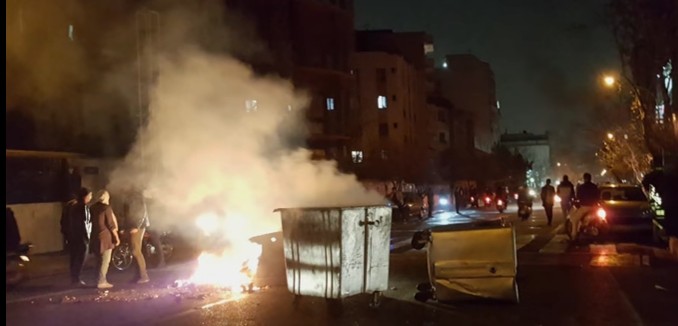The recent protests against the Iranian regime have been fueled by the corruption of the government that has ruined Iran’s economy since the 2015 nuclear deal Lee Smith, a senior fellow at the Hudson Institute, wrote Wednesday in an analysis for Real Clear Investigations.
Smith described the protests as political but driven by economics.
Though the nuclear freed up billions of frozen funds and relaxed sanctions on Iran’s banking sector, regular Iranians have not benefited from the economic growth.
Smith explained:
Economies under authoritarian regimes like the one in Tehran always reflect the country’s political architecture. The allocation of financial resources and privileges is how an authoritarian regime dispenses political favors and indicates its political preferences. Protests about the economy are by definition protests against the political structure of the regime.
At the top of the hierarchy in Iran is the Islamic Revolutionary Guard Corps (IRGC) which serves both to enforce Iran’s internal security and also serves to run Iran’s “expansionary foreign policy.” The IRGC also controls up to 40% of Iran’s economy including ““the oil industry, infrastructure development, construction, manufacturing, electronics, and the most lucrative import-export contracts.”
The IRGC and other regime insiders, according to Saeed Ghasseminejad, who specializes in Iran’s financial sector at the Foundation for Defense of Democracies, have availed themselves of loans from Iran’s banks and failed to repay them, meaning there is less money available for ordinary Iran’s to obtain loans.
In addition, Ghasseminejad noted that in recent years a number of unregulated financial institutions, connected to regime insiders, have sprung up in recent years. Iranians saved their money in these unregulated institutions only to find when they wanted to withdraw their money that their deposits were gone. He said that as a result “hundreds of thousands of people lost their savings,” hurting their financial status.
Former Treasury Secretary Jack Lew said in 2015 that “Iran is expected to use new revenues chiefly to address those needs, including by shoring up its budget, building infrastructure, maintaining the stability of the rial, and attracting imports,” rather than funding terror. Similarly, former President Barack Obama said in a speech that August, “our best analysts expect the bulk of this revenue to go into spending that improves the economy and benefits the lives of the Iranian people.”
A study in June 2016 determined that Iran’s economy would grow at a rate of 4% a year over the next five years. But rather than spending the infusion of billions of dollars into the economy on domestic needs, the money has been going to boost Iran’s military spending, which increased 90% from 2016 to 2017. Last year Iran’s parliament voted to designate $7.4 billion of Iran’s defense budget to the IRGC, marking a 24% increase in spending on the powerful institution.
[Photo: The National / YouTube]




